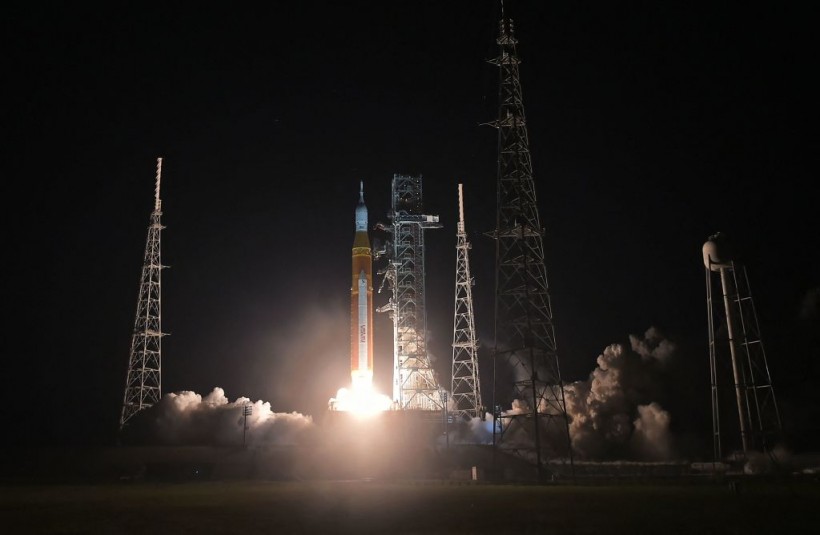After Friday's entry into a far-off retrograde orbit, NASA's Artemis 1 mission is now on its 11th day. The eleventh day, however, was anything from ordinary. It made history.
According to NASA's most recent update, Orion officially surpassed the record for the longest trip made by a spaceship designed to transport humans into orbit and back to Earth at 7:42 a.m. on Saturday, Nov. 26.

The Artemis I unmanned lunar rocket lifts off from launch pad 39B at NASA's Kennedy Space Center in Cape Canaveral, Florida, on November 16, 2022. - NASA's Artemis 1 mission is a 25-and-a-half-day voyage beyond the far side of the Moon and back. The meticulously choreographed, uncrewed flight should yield spectacular images and valuable scientific data.
NASA's Artemis 1 Breaks Apollo 13's Record
The Apollo 13 mission, which recorded 248,655 miles from Earth, was the first to reach the milestone. When Orion is closest to the Moon on Monday, Nov. 28, it will be more than 270,000 miles away (per BBC News) from Earth.
On Saturday, Orion's service module's auxiliary thrusters were fired for less than a second to complete its first orbital maintenance burn and propel the spaceship at a speed of.47 feet per second.
Over the duration of the planned orbital maintenance burns, Orion's path will be modified while it continues to orbit the Moon.
When the spacecraft leaves the Moon's orbit after six days in a retrograde orbit, it will be on a trajectory to return to Earth and splash down in the Pacific Ocean on Sunday, Dec. 11.
Commander Moonikin Campos
Onboard Orion for the Artemis I mission is a suit manikin bearing the name of a key player in the successful return of Apollo 13 to Earth.
NASA named the manikin Arturo Campos in honor of the electrical engineer who devised a way to provide the Apollo spacecraft's command module with enough electrical power to safely fly home after an oxygen tank exploded on the service module.
In order to continue Commander Moonikin Campos' legacy of launching human exploration into deep space, she carries sensors that offer information on potential crew experiences during the trip.
Artemis expands upon Apollo's wisdom. With Artemis, people will visit the Moon's surface once more, but this time they'll remain.
NASA will use cutting-edge technology to install the Gateway space station in lunar orbit with cutting-edge spacesuits and rovers to study the Moon's South Pole and a bigger region of its surface than ever before.
NASA said it would lead in establishing the first permanent human presence on the Moon, working with business and international partners.
What is Next
With the knowledge it has gained on and around the Moon, Artemis 1 will take its next significant step when it launches the first men to Mars.
A touchdown won't occur with Orion until NASA astronauts try a lunar landing with SpaceX's Starship in 2025.
In 2024, Artemis 2 will fly a crewed Orion around the Moon for the first astronaut mission.
According to the most recent NASA blog entry, Orion was 252,133 miles away from Earth and 52,707 miles away from the Moon and was moving at a pace of 2,013 miles per hour.
RELATED ARTICLE: NASA Artemis 1 Shares Stunning Photo of Earth, Moon [LOOK]
Check out more news and information on Space in Science Times.














